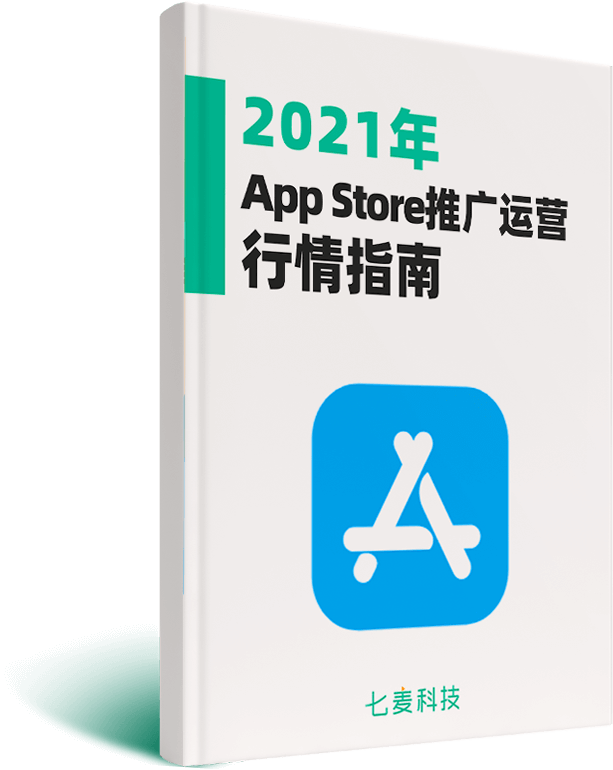Precision Strobe Tuner
开发者: Jim Campbell
中国
版本统计
211天3小时
最新版本上线距今
2
近1年版本更新次数
2011-04-19
全球最早版本上线日期
版本记录
版本: 1.93
版本更新日期
2024-12-16

Precision Strobe Tuner
更新日志
Updates for new devices and IOS 18.应用描述
Precision Strobe Tuner 1.93
A General Purpose Chromatic Musical Instrument Tuner App with special Temperament and Piano Tuning Functions.
The PST combines a radial Spectrum Display with a classic Strobe Tuner and Note Dial for an ultimate visualization of pitch and tone. The Strobe Display is highly sensitive with response speed that is practically instantaneous and has long been the preferred tool for piano tuners and instrument technicians.
The central Spectrum Display shows the input spectrum wrapped around the Display, with each Octave drawn in a separate color. The Note Dial is marked like a clock with the twelve notes of the Scale. All overtones of the input are shown as peaks in the Spectrum Display pointing towards their corresponding Notes. The Fundamental Indicator Tic on the Spectrum Display shows the Note of the Fundamental along the Note Dial, with the color designating the Octave. Use the Spectrum Display for coarse adjustment by tuning the Fundamental to the center of the desired Note Indicator.
As the input approaches the desired Note, a Two Group pinwheel pattern becomes visible rotating in the Strobe Display. Fine tuning is accomplished by adjusting to stop rotation. The Strobe Display responds instantaneously to changes in pitch and is extremely sensitive. The outside Strobe Display works just like a classic rotating disk strobe tuner. The Two-Group pattern rotates CCW when the input is flat, and CW when sharp. When the rotation is stopped, the note is in tune.
The previews show a general strobe display demonstration, an example of using the calibration function to measure the accuracy of a tuning fork and an example of guitar string tuning.
The first screenshot shows the display tuning a Guitar Low E string. The Fundamental appears as an Orange peak in the Spectrum Display. This string rings bright, so the overtones are also dominant in the Display.
The second screenshot shows the display for an E 440 Tuning Fork with the Calibration Dial enabled and adjusted. This Fork is 2.9 cent Flat.
The PST also includes a Programmable Temperament Function with 5 user definable banks. The third screenshot shows an example of a Temperament Bank set up to a typical Piano Stretch Curve. This can also be used for tuning alternate temperaments, pedal steel guitar setups, or special guitar intonation systems.
In addition, there are several Special Measurement Banks used for String Inharmonicity characterization and Piano Stretch Curve Estimation. Individual strings can be characterized by measuring the Fundamental and 2nd Harmonic separately. By careful selection of a few representative measurement points, a reasonable smooth fit Piano Stretch Curve can be generated. Any number of measurements can be used.
The final screenshot shows the Input Signal Scope/Spectrum Display Page.
The Detailed Operation Manual can be viewed here:
www.precisionstrobe.com
版本: 1.92
版本更新日期
2024-08-17

Precision Strobe Tuner
更新日志
Updates for new devices.应用描述
Precision Strobe Tuner 1.92
A General Purpose Chromatic Musical Instrument Tuner App with special Temperament and Piano Tuning Functions.
The PST combines a radial Spectrum Display with a classic Strobe Tuner and Note Dial for an ultimate visualization of pitch and tone. The Strobe Display is highly sensitive with response speed that is practically instantaneous and has long been the preferred tool for piano tuners and instrument technicians.
The central Spectrum Display shows the input spectrum wrapped around the Display, with each Octave drawn in a separate color. The Note Dial is marked like a clock with the twelve notes of the Scale. All overtones of the input are shown as peaks in the Spectrum Display pointing towards their corresponding Notes. The Fundamental Indicator Tic on the Spectrum Display shows the Note of the Fundamental along the Note Dial, with the color designating the Octave. Use the Spectrum Display for coarse adjustment by tuning the Fundamental to the center of the desired Note Indicator.
As the input approaches the desired Note, a Two Group pinwheel pattern becomes visible rotating in the Strobe Display. Fine tuning is accomplished by adjusting to stop rotation. The Strobe Display responds instantaneously to changes in pitch and is extremely sensitive. The outside Strobe Display works just like a classic rotating disk strobe tuner. The Two-Group pattern rotates CCW when the input is flat, and CW when sharp. When the rotation is stopped, the note is in tune.
The previews show a general strobe display demonstration, an example of using the calibration function to measure the accuracy of a tuning fork and an example of guitar string tuning.
The first screenshot shows the display tuning a Guitar Low E string. The Fundamental appears as an Orange peak in the Spectrum Display. This string rings bright, so the overtones are also dominant in the Display.
The second screenshot shows the display for an E 440 Tuning Fork with the Calibration Dial enabled and adjusted. This Fork is 2.9 cent Flat.
The PST also includes a Programmable Temperament Function with 5 user definable banks. The third screenshot shows an example of a Temperament Bank set up to a typical Piano Stretch Curve. This can also be used for tuning alternate temperaments, pedal steel guitar setups, or special guitar intonation systems.
In addition, there are several Special Measurement Banks used for String Inharmonicity characterization and Piano Stretch Curve Estimation. Individual strings can be characterized by measuring the Fundamental and 2nd Harmonic separately. By careful selection of a few representative measurement points, a reasonable smooth fit Piano Stretch Curve can be generated. Any number of measurements can be used.
The final screenshot shows the Input Signal Scope/Spectrum Display Page.
The Detailed Operation Manual can be viewed here:
www.precisionstrobe.com
版本: 1.91
版本更新日期
2023-01-19

Precision Strobe Tuner
更新日志
Updates for iPad and iPadOS应用描述
Precision Strobe Tuner 1.91
A General Purpose Chromatic Musical Instrument Tuner App with special Temperament and Piano Tuning Functions.
The PST combines a radial Spectrum Display with a classic Strobe Tuner and Note Dial for an ultimate visualization of pitch and tone. The Strobe Display is highly sensitive with response speed that is practically instantaneous and has long been the preferred tool for piano tuners and instrument technicians.
The central Spectrum Display shows the input spectrum wrapped around the Display, with each Octave drawn in a separate color. The Note Dial is marked like a clock with the twelve notes of the Scale. All overtones of the input are shown as peaks in the Spectrum Display pointing towards their corresponding Notes. The Fundamental Indicator Tic on the Spectrum Display shows the Note of the Fundamental along the Note Dial, with the color designating the Octave. Use the Spectrum Display for coarse adjustment by tuning the Fundamental to the center of the desired Note Indicator.
As the input approaches the desired Note, a Two Group pinwheel pattern becomes visible rotating in the Strobe Display. Fine tuning is accomplished by adjusting to stop rotation. The Strobe Display responds instantaneously to changes in pitch and is extremely sensitive. The outside Strobe Display works just like a classic rotating disk strobe tuner. The Two-Group pattern rotates CCW when the input is flat, and CW when sharp. When the rotation is stopped, the note is in tune.
The previews show a general strobe display demonstration, an example of using the calibration function to measure the accuracy of a tuning fork and an example of guitar string tuning.
The first screenshot shows the display tuning a Guitar Low E string. The Fundamental appears as an Orange peak in the Spectrum Display. This string rings bright, so the overtones are also dominant in the Display.
The second screenshot shows the display for an E 440 Tuning Fork with the Calibration Dial enabled and adjusted. This Fork is 2.9 cent Flat.
The PST also includes a Programmable Temperament Function with 5 user definable banks. The third screenshot shows an example of a Temperament Bank set up to a typical Piano Stretch Curve. This can also be used for tuning alternate temperaments, pedal steel guitar setups, or special guitar intonation systems.
In addition, there are several Special Measurement Banks used for String Inharmonicity characterization and Piano Stretch Curve Estimation. Individual strings can be characterized by measuring the Fundamental and 2nd Harmonic separately. By careful selection of a few representative measurement points, a reasonable smooth fit Piano Stretch Curve can be generated. Any number of measurements can be used.
The final screenshot shows the Input Signal Scope/Spectrum Display Page.
The Detailed Operation Manual can be viewed here:
www.precisionstrobe.com
版本: 1.9
版本更新日期
2022-12-10

Precision Strobe Tuner
更新日志
Fixes for iOS 16.应用描述
Precision Strobe Tuner 1.9
A General Purpose Chromatic Musical Instrument Tuner App with special Temperament and Piano Tuning Functions.
The PST combines a radial Spectrum Display with a classic Strobe Tuner and Note Dial for an ultimate visualization of pitch and tone. The Strobe Display is highly sensitive with response speed that is practically instantaneous and has long been the preferred tool for piano tuners and instrument technicians.
The central Spectrum Display shows the input spectrum wrapped around the Display, with each Octave drawn in a separate color. The Note Dial is marked like a clock with the twelve notes of the Scale. All overtones of the input are shown as peaks in the Spectrum Display pointing towards their corresponding Notes. The Fundamental Indicator Tic on the Spectrum Display shows the Note of the Fundamental along the Note Dial, with the color designating the Octave. Use the Spectrum Display for coarse adjustment by tuning the Fundamental to the center of the desired Note Indicator.
As the input approaches the desired Note, a Two Group pinwheel pattern becomes visible rotating in the Strobe Display. Fine tuning is accomplished by adjusting to stop rotation. The Strobe Display responds instantaneously to changes in pitch and is extremely sensitive. The outside Strobe Display works just like a classic rotating disk strobe tuner. The Two-Group pattern rotates CCW when the input is flat, and CW when sharp. When the rotation is stopped, the note is in tune.
The previews show a general strobe display demonstration, an example of using the calibration function to measure the accuracy of a tuning fork and an example of guitar string tuning.
The first screenshot shows the display tuning a Guitar Low E string. The Fundamental appears as an Orange peak in the Spectrum Display. This string rings bright, so the overtones are also dominant in the Display.
The second screenshot shows the display for an E 440 Tuning Fork with the Calibration Dial enabled and adjusted. This Fork is 2.9 cent Flat.
The PST also includes a Programmable Temperament Function with 5 user definable banks. The third screenshot shows an example of a Temperament Bank set up to a typical Piano Stretch Curve. This can also be used for tuning alternate temperaments, pedal steel guitar setups, or special guitar intonation systems.
In addition, there are several Special Measurement Banks used for String Inharmonicity characterization and Piano Stretch Curve Estimation. Individual strings can be characterized by measuring the Fundamental and 2nd Harmonic separately. By careful selection of a few representative measurement points, a reasonable smooth fit Piano Stretch Curve can be generated. Any number of measurements can be used.
The final screenshot shows the Input Signal Scope/Spectrum Display Page.
The Detailed Operation Manual can be viewed here:
www.precisionstrobe.com
版本: 1.82
版本更新日期
2022-04-20
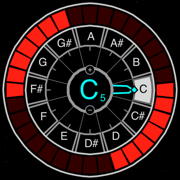
Precision Strobe Tuner
更新日志
More screen size updates.应用描述
Precision Strobe Tuner 1.82
A General Purpose Chromatic Musical Instrument Tuner App with special Temperament and Piano Tuning Functions.
The PST combines a radial Spectrum Display with a classic Strobe Tuner and Note Dial for an ultimate visualization of pitch and tone. The Strobe Display is highly sensitive with response speed that is practically instantaneous and has long been the preferred tool for piano tuners and instrument technicians.
The central Spectrum Display shows the input spectrum wrapped around the Display, with each Octave drawn in a separate color. The Note Dial is marked like a clock with the twelve notes of the Scale. All overtones of the input are shown as peaks in the Spectrum Display pointing towards their corresponding Notes. The Fundamental Indicator Tic on the Spectrum Display shows the Note of the Fundamental along the Note Dial, with the color designating the Octave. Use the Spectrum Display for coarse adjustment by tuning the Fundamental to the center of the desired Note Indicator.
As the input approaches the desired Note, a Two Group pinwheel pattern becomes visible rotating in the Strobe Display. Fine tuning is accomplished by adjusting to stop rotation. The Strobe Display responds instantaneously to changes in pitch and is extremely sensitive. The outside Strobe Display works just like a classic rotating disk strobe tuner. The Two-Group pattern rotates CCW when the input is flat, and CW when sharp. When the rotation is stopped, the note is in tune.
The previews show a general strobe display demonstration, an example of using the calibration function to measure the accuracy of a tuning fork and an example of guitar string tuning.
The first screenshot shows the display tuning a Guitar Low E string. The Fundamental appears as an Orange peak in the Spectrum Display. This string rings bright, so the overtones are also dominant in the Display.
The second screenshot shows the display for an E 440 Tuning Fork with the Calibration Dial enabled and adjusted. This Fork is 2.9 cent Flat.
The PST also includes a Programmable Temperament Function with 5 user definable banks. The third screenshot shows an example of a Temperament Bank set up to a typical Piano Stretch Curve. This can also be used for tuning alternate temperaments, pedal steel guitar setups, or special guitar intonation systems.
In addition, there are several Special Measurement Banks used for String Inharmonicity characterization and Piano Stretch Curve Estimation. Individual strings can be characterized by measuring the Fundamental and 2nd Harmonic separately. By careful selection of a few representative measurement points, a reasonable smooth fit Piano Stretch Curve can be generated. Any number of measurements can be used.
The final screenshot shows the Input Signal Scope/Spectrum Display Page.
The Detailed Operation Manual can be viewed here:
www.precisionstrobe.com
版本: 1.81
版本更新日期
2022-04-14

Precision Strobe Tuner
更新日志
Updates for newer device sizes.应用描述
Precision Strobe Tuner 1.81
A General Purpose Chromatic Musical Instrument Tuner App with special Temperament and Piano Tuning Functions.
The PST combines a radial Spectrum Display with a classic Strobe Tuner and Note Dial for an ultimate visualization of pitch and tone. The Strobe Display is highly sensitive with response speed that is practically instantaneous and has long been the preferred tool for piano tuners and instrument technicians.
The central Spectrum Display shows the input spectrum wrapped around the Display, with each Octave drawn in a separate color. The Note Dial is marked like a clock with the twelve notes of the Scale. All overtones of the input are shown as peaks in the Spectrum Display pointing towards their corresponding Notes. The Fundamental Indicator Tic on the Spectrum Display shows the Note of the Fundamental along the Note Dial, with the color designating the Octave. Use the Spectrum Display for coarse adjustment by tuning the Fundamental to the center of the desired Note Indicator.
As the input approaches the desired Note, a Two Group pinwheel pattern becomes visible rotating in the Strobe Display. Fine tuning is accomplished by adjusting to stop rotation. The Strobe Display responds instantaneously to changes in pitch and is extremely sensitive. The outside Strobe Display works just like a classic rotating disk strobe tuner. The Two-Group pattern rotates CCW when the input is flat, and CW when sharp. When the rotation is stopped, the note is in tune.
The previews show a general strobe display demonstration, an example of using the calibration function to measure the accuracy of a tuning fork and an example of guitar string tuning.
The first screenshot shows the display tuning a Guitar Low E string. The Fundamental appears as an Orange peak in the Spectrum Display. This string rings bright, so the overtones are also dominant in the Display.
The second screenshot shows the display for an E 440 Tuning Fork with the Calibration Dial enabled and adjusted. This Fork is 2.9 cent Flat.
The PST also includes a Programmable Temperament Function with 5 user definable banks. The third screenshot shows an example of a Temperament Bank set up to a typical Piano Stretch Curve. This can also be used for tuning alternate temperaments, pedal steel guitar setups, or special guitar intonation systems.
In addition, there are several Special Measurement Banks used for String Inharmonicity characterization and Piano Stretch Curve Estimation. Individual strings can be characterized by measuring the Fundamental and 2nd Harmonic separately. By careful selection of a few representative measurement points, a reasonable smooth fit Piano Stretch Curve can be generated. Any number of measurements can be used.
The final screenshot shows the Input Signal Scope/Spectrum Display Page.
The Detailed Operation Manual can be viewed here:
www.precisionstrobe.com
版本: 1.80
版本更新日期
2022-03-29

Precision Strobe Tuner
更新日志
Added Reference Tone Output.应用描述
Precision Strobe Tuner 1.80
A General Purpose Chromatic Musical Instrument Tuner App with special Temperament and Piano Tuning Functions.
The PST combines a radial Spectrum Display with a classic Strobe Tuner and Note Dial for an ultimate visualization of pitch and tone. The Strobe Display is highly sensitive with response speed that is practically instantaneous and has long been the preferred tool for piano tuners and instrument technicians.
The central Spectrum Display shows the input spectrum wrapped around the Display, with each Octave drawn in a separate color. The Note Dial is marked like a clock with the twelve notes of the Scale. All overtones of the input are shown as peaks in the Spectrum Display pointing towards their corresponding Notes. The Fundamental Indicator Tic on the Spectrum Display shows the Note of the Fundamental along the Note Dial, with the color designating the Octave. Use the Spectrum Display for coarse adjustment by tuning the Fundamental to the center of the desired Note Indicator.
As the input approaches the desired Note, a Two Group pinwheel pattern becomes visible rotating in the Strobe Display. Fine tuning is accomplished by adjusting to stop rotation. The Strobe Display responds instantaneously to changes in pitch and is extremely sensitive. The outside Strobe Display works just like a classic rotating disk strobe tuner. The Two-Group pattern rotates CCW when the input is flat, and CW when sharp. When the rotation is stopped, the note is in tune.
The previews show a general strobe display demonstration, an example of using the calibration function to measure the accuracy of a tuning fork and an example of guitar string tuning.
The first screenshot shows the display tuning a Guitar Low E string. The Fundamental appears as an Orange peak in the Spectrum Display. This string rings bright, so the overtones are also dominant in the Display.
The second screenshot shows the display for an E 440 Tuning Fork with the Calibration Dial enabled and adjusted. This Fork is 2.9 cent Flat.
The PST also includes a Programmable Temperament Function with 5 user definable banks. The third screenshot shows an example of a Temperament Bank set up to a typical Piano Stretch Curve. This can also be used for tuning alternate temperaments, pedal steel guitar setups, or special guitar intonation systems.
In addition, there are several Special Measurement Banks used for String Inharmonicity characterization and Piano Stretch Curve Estimation. Individual strings can be characterized by measuring the Fundamental and 2nd Harmonic separately. By careful selection of a few representative measurement points, a reasonable smooth fit Piano Stretch Curve can be generated. Any number of measurements can be used.
The final screenshot shows the Input Signal Scope/Spectrum Display Page.
The Detailed Operation Manual can be viewed here:
www.precisionstrobe.com
版本: 1.72
版本更新日期
2020-06-16

Precision Strobe Tuner
更新日志
Minor Updates.应用描述
Precision Strobe Tuner 1.72
A General Purpose Chromatic Musical Instrument Tuner App with special Temperament and Piano Tuning Functions.
The PST combines a radial Spectrum Display with a classic Strobe Tuner and Note Dial for an ultimate visualization of pitch and tone. The Strobe Display is highly sensitive with response speed that is practically instantaneous and has long been the preferred tool for piano tuners and instrument technicians.
The central Spectrum Display shows the input spectrum wrapped around the Display, with each Octave drawn in a separate color. The Note Dial is marked like a clock with the twelve notes of the Scale. All overtones of the input are shown as peaks in the Spectrum Display pointing towards their corresponding Notes. The Fundamental Indicator Tic on the Spectrum Display shows the Note of the Fundamental along the Note Dial, with the color designating the Octave. Use the Spectrum Display for coarse adjustment by tuning the Fundamental to the center of the desired Note Indicator.
As the input approaches the desired Note, a Two Group pinwheel pattern becomes visible rotating in the Strobe Display. Fine tuning is accomplished by adjusting to stop rotation. The Strobe Display responds instantaneously to changes in pitch and is extremely sensitive. The outside Strobe Display works just like a classic rotating disk strobe tuner. The Two-Group pattern rotates CCW when the input is flat, and CW when sharp. When the rotation is stopped, the note is in tune.
The previews show a general strobe display demonstration, an example of using the calibration function to measure the accuracy of a tuning fork and an example of guitar string tuning.
The first screenshot shows the display tuning a Guitar Low E string. The Fundamental appears as an Orange peak in the Spectrum Display. This string rings bright, so the overtones are also dominant in the Display.
The second screenshot shows the display for an E 440 Tuning Fork with the Calibration Dial enabled and adjusted. This Fork is 2.9 cent Flat.
The PST also includes a Programmable Temperament Function with 5 user definable banks. The third screenshot shows an example of a Temperament Bank set up to a typical Piano Stretch Curve. This can also be used for tuning alternate temperaments, pedal steel guitar setups, or special guitar intonation systems.
In addition, there are several Special Measurement Banks used for String Inharmonicity characterization and Piano Stretch Curve Estimation. Individual strings can be characterized by measuring the Fundamental and 2nd Harmonic separately. By careful selection of a few representative measurement points, a reasonable smooth fit Piano Stretch Curve can be generated. Any number of measurements can be used.
The final screenshot shows the Input Signal Scope/Spectrum Display Page.
The Detailed Operation Manual can be viewed here:
www.precisionstrobe.com
版本: 1.71
版本更新日期
2020-05-19

Precision Strobe Tuner
更新日志
Display Refinements.应用描述
Precision Strobe Tuner 1.71
A General Purpose Chromatic Musical Instrument Tuner App with special Temperament and Piano Tuning Functions.
The PST combines a radial Spectrum Display with a classic Strobe Tuner and Note Dial for an ultimate visualization of pitch and tone. The Strobe Display is highly sensitive with response speed that is practically instantaneous and has long been the preferred tool for piano tuners and instrument technicians.
The central Spectrum Display shows the input spectrum wrapped around the Display, with each Octave drawn in a separate color. The Note Dial is marked like a clock with the twelve notes of the Scale. All overtones of the input are shown as peaks in the Spectrum Display pointing towards their corresponding Notes. The Fundamental Indicator Tic on the Spectrum Display shows the Note of the Fundamental along the Note Dial, with the color designating the Octave. Use the Spectrum Display for coarse adjustment by tuning the Fundamental to the center of the desired Note Indicator.
As the input approaches the desired Note, a Two Group pinwheel pattern becomes visible rotating in the Strobe Display. Fine tuning is accomplished by adjusting to stop rotation. The Strobe Display responds instantaneously to changes in pitch and is extremely sensitive. The outside Strobe Display works just like a classic rotating disk strobe tuner. The Two-Group pattern rotates CCW when the input is flat, and CW when sharp. When the rotation is stopped, the note is in tune.
The first screenshot shows the display tuning a Guitar Low E string. The Fundamental appears as an Orange peak in the Spectrum Display. This string rings bright, so the overtones are also dominant in the Display.
The second screenshot shows the display for an E 440 Tuning Fork with the Calibration Dial enabled and adjusted. This Fork is 2.9 cent Flat.
The PST also includes a Programmable Temperament Function with 5 user definable banks. The third screenshot shows an example of a Temperament Bank set up to a typical Piano Stretch Curve. This can also be used for tuning alternate temperaments, pedal steel guitar setups, or special guitar intonation systems.
In addition, there are several Special Measurement Banks used for String Inharmonicity characterization and Piano Stretch Curve Estimation. Individual strings can be characterized by measuring the Fundamental and 2nd Harmonic separately. By careful selection of a few representative measurement points, a reasonable smooth fit Piano Stretch Curve can be generated. Any number of measurements can be used.
The final screenshot shows the Input Signal Scope/Spectrum Display Page.
The Detailed Operation Manual can be viewed here:
www.precisionstrobe.com
版本: 1.70
版本更新日期
2019-05-21

Precision Strobe Tuner
更新日志
- Added Tuning Bubble Meter
- Display Refinements
- Minor Bug Fixes应用描述
Precision Strobe Tuner 1.64
A General Purpose Chromatic Musical Instrument Tuner App with special Temperament and Piano Tuning Functions.
The PST combines a radial Spectrum Display with a classic Strobe Tuner and Note Dial for an ultimate visualization of pitch and tone. The Strobe Display is highly sensitive with response speed that is practically instantaneous and has long been the preferred tool for piano tuners and instrument technicians.
The central Spectrum Display shows the input spectrum wrapped around the Display, with each Octave drawn in a separate color. The Note Dial is marked like a clock with the twelve notes of the Scale. All overtones of the input are shown as peaks in the Spectrum Display pointing towards their corresponding Notes. The Fundamental Indicator Tic on the Spectrum Display shows the Note of the Fundamental along the Note Dial, with the color designating the Octave. Use the Spectrum Display for coarse adjustment by tuning the Fundamental to the center of the desired Note Indicator.
As the input approaches the desired Note, a Two Group pinwheel pattern becomes visible rotating in the Strobe Display. Fine tuning is accomplished by adjusting to stop rotation. The Strobe Display responds instantaneously to changes in pitch and is extremely sensitive. The outside Strobe Display works just like a classic rotating disk strobe tuner. The Two-Group pattern rotates CCW when the input is flat, and CW when sharp. When the rotation is stopped, the note is in tune.
The first screenshot shows the display tuning a Guitar Low E string. The Fundamental appears as an Orange peak in the Spectrum Display. This string rings bright, so the overtones are also dominant in the Display.
The second screenshot shows the display for an E 440 Tuning Fork with the Calibration Dial enabled and set. This Fork is 1.3 cent Flat.
The PST also includes a Programmable Temperament Function with 5 user definable banks. The third screenshot shows an example of a Temperament Bank set up to a typical Piano Stretch Curve. This can also be used for tuning alternate temperaments, pedal steel guitar setups, or special guitar intonation systems.
In addition, there are several Special Measurement Banks used for String Inharmonicity characterization and Piano Stretch Curve Calculation. Individual strings can be characterized by measuring the Fundamental and 2nd Harmonic separately. By careful selection of a few representative measurement points, a reasonable smooth fit Piano Stretch Curve can be generated. Any number of measurements up to C7 can be used.
The final screenshot shows the Input Signal Scope/Spectrum Display Page.
The Detailed Operation Manual can be viewed here:
www.precisionstrobe.com

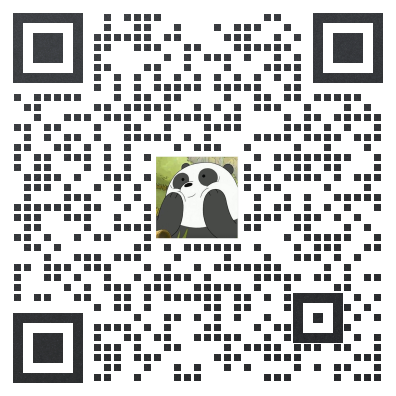

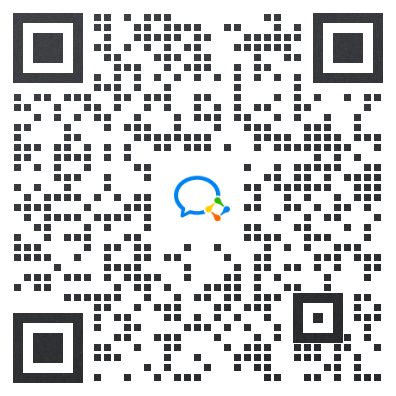
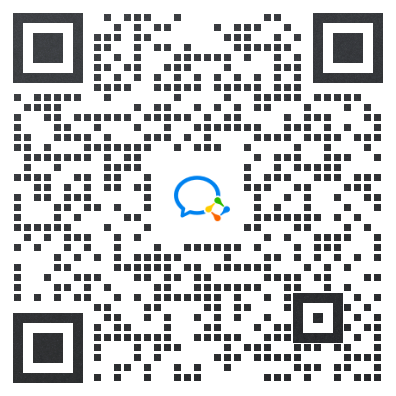
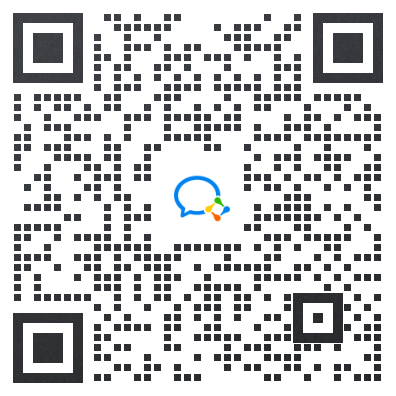




 京公网安备 11010502041000号
京公网安备 11010502041000号



